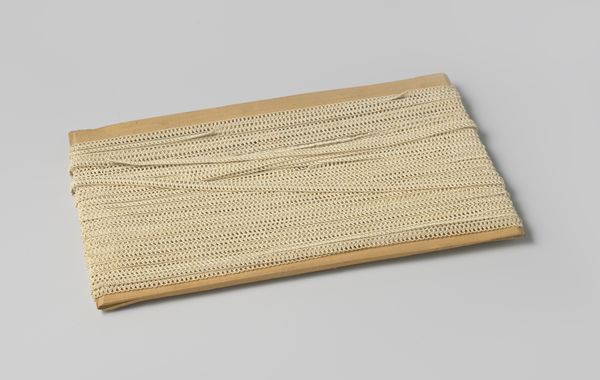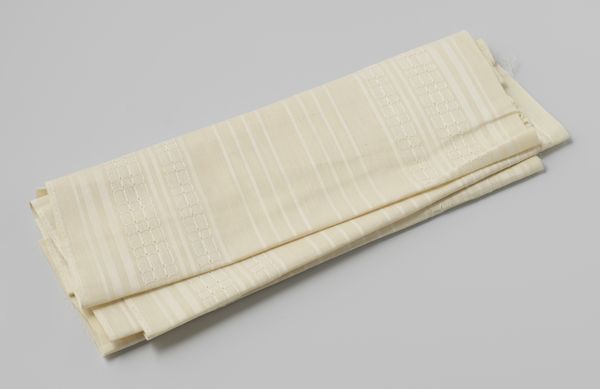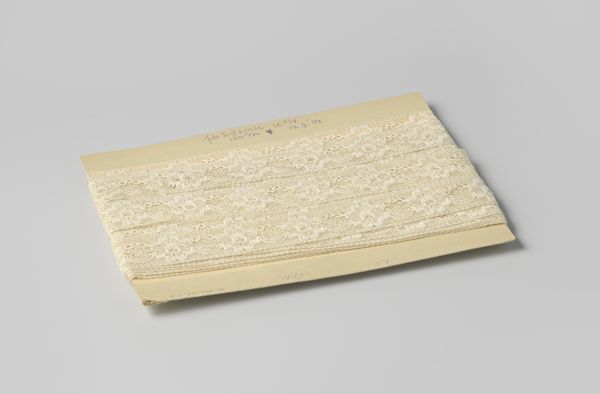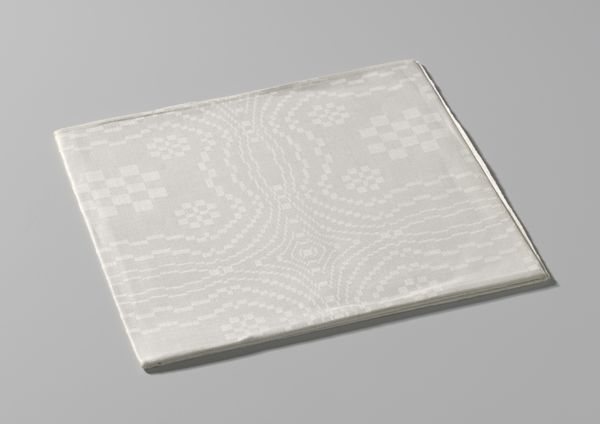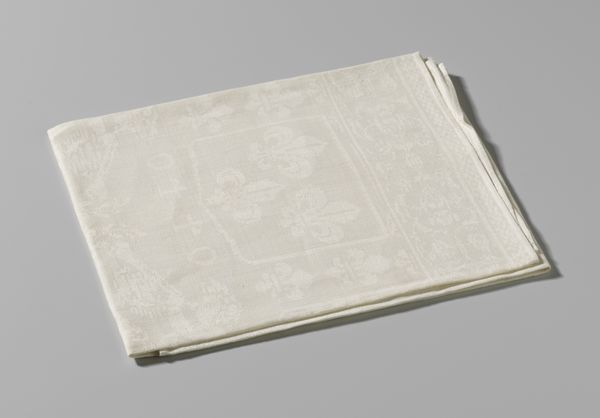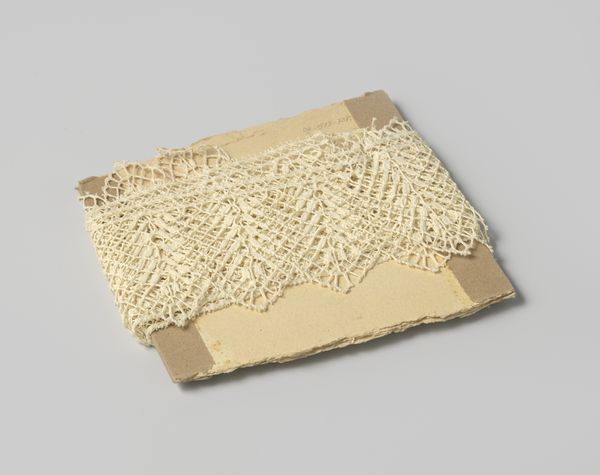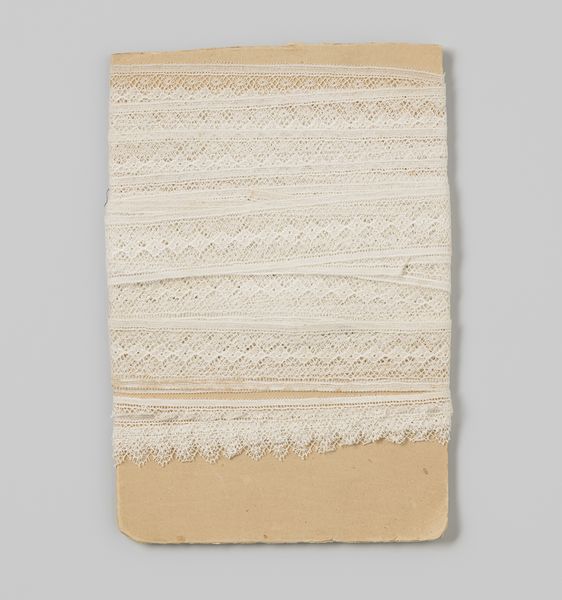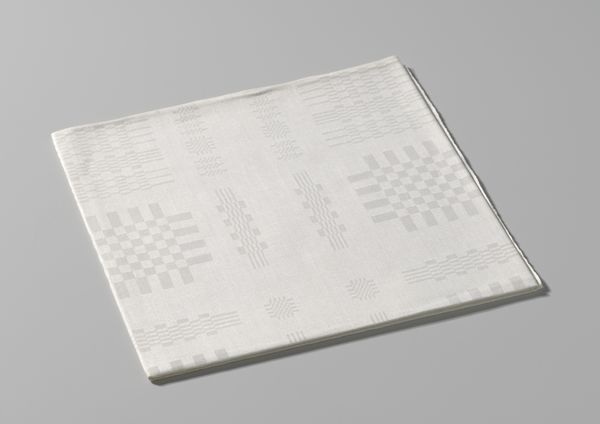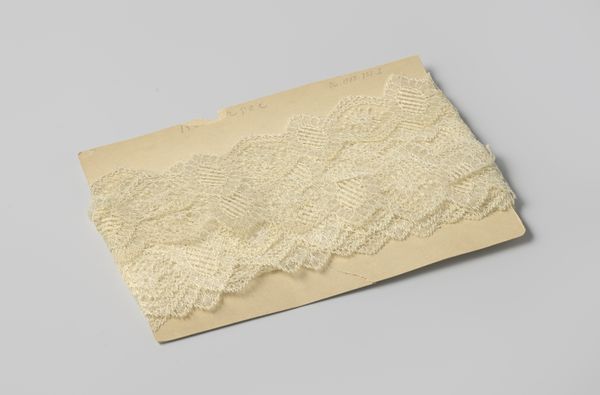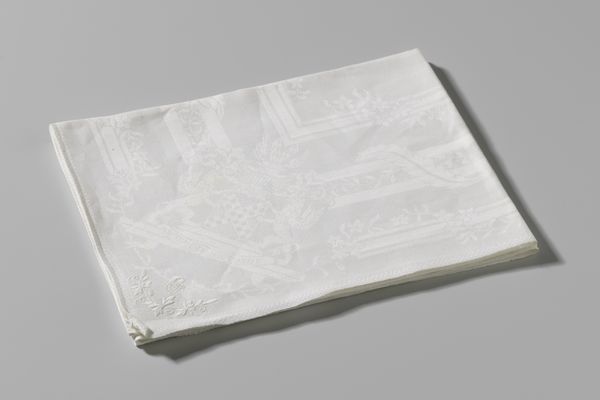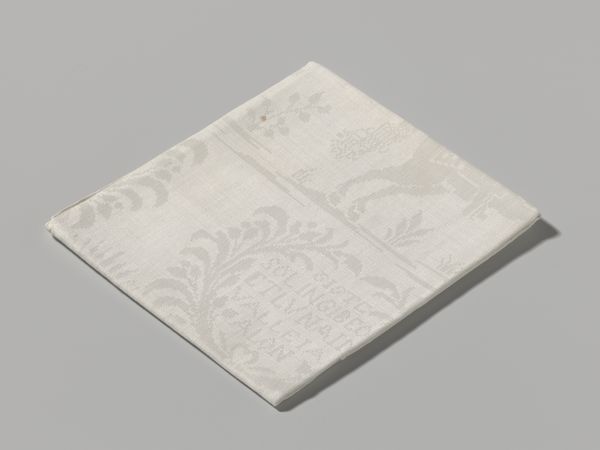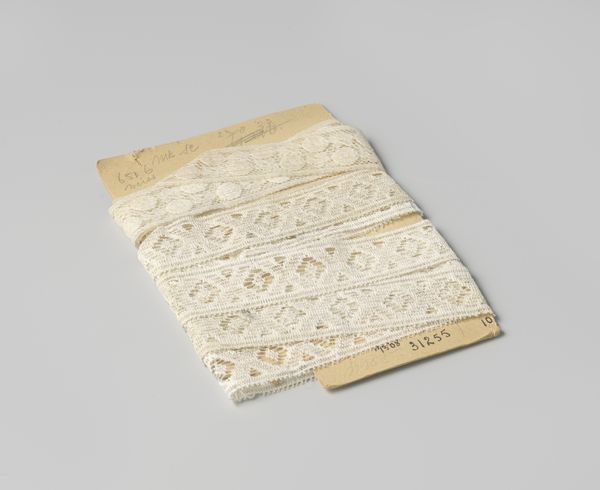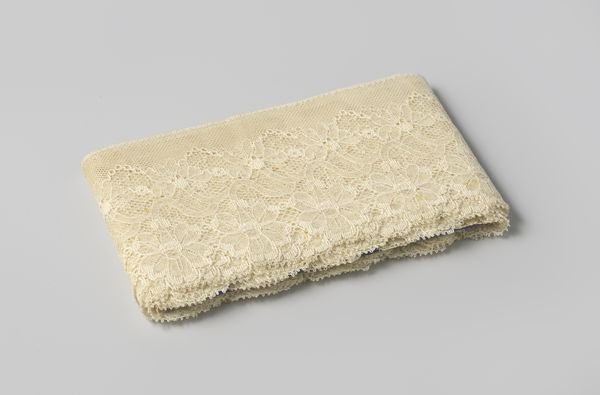
Tussenzetsel, wit, met een motief van vierkanten en ruiten op karton c. 1925
0:00
0:00
weaving, textile
#
weaving
#
textile
#
geometric
Dimensions: width 5 cm, length 27 cm, width 21 cm
Copyright: Rijks Museum: Open Domain
This length of lace, with squares and diamond motifs, was likely designed by Gustav Schnitzler. It's made of cotton thread, and presented on its original cardboard backing. The delicate, airy quality of the lace belies the labor involved in its production. Lace making was traditionally a handcraft, requiring intense concentration and highly skilled manipulation of bobbins or needles. By the late 19th century, however, machines had begun to automate the process. This raises questions about how this particular lace was made. Was it a product of skilled hand labor, or of the factory? The regularity of the pattern suggests machine production, but the possibility of handcraft shouldn't be dismissed. Whether made by hand or machine, lace like this speaks to the wider context of textile production and consumption. It reflects social hierarchies, labor practices, and the changing landscape of industrial manufacturing. Considering these factors allows us to appreciate the material, making, and cultural significance of this seemingly simple object.
Comments
No comments
Be the first to comment and join the conversation on the ultimate creative platform.
